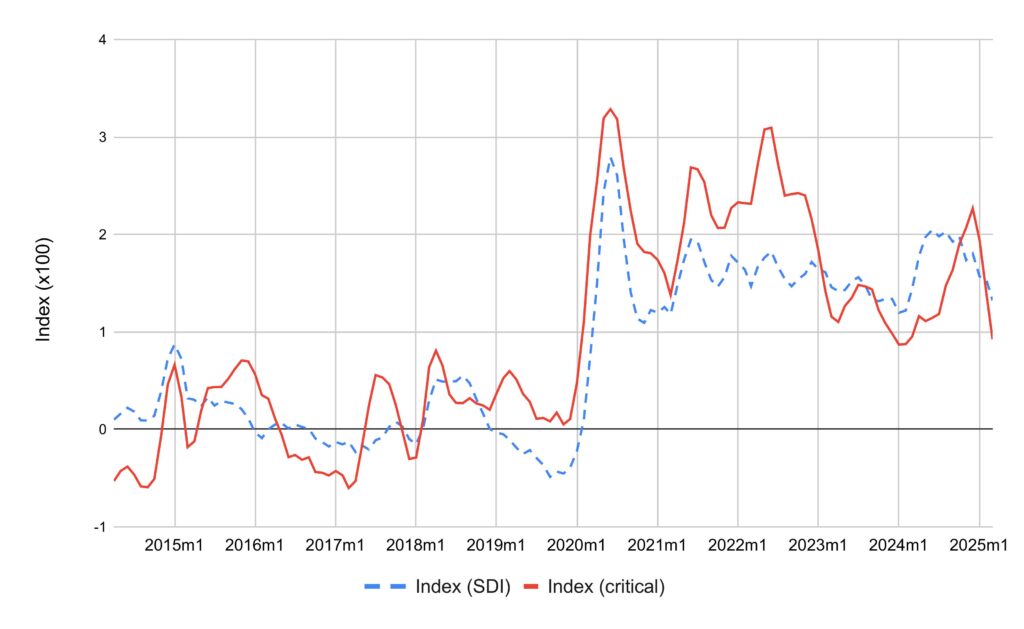Supported by the Blue Center for Global Strategic Assessment, this tool will monitor supply chain disruptions, enabling firms and governments to detect abnormalities in the flows of critical products and materials.
The Index of Critical Supply Chain Disruptions uses hundreds of millions of data records from multiple public and private sources, then applies proprietary machine learning algorithms to that data — both to determine which products should be categorized as critical and to quantify the rate of disruption in the flows of those products. This results in a near real-time picture of whether critical trade is occurring normally or experiencing disturbances.
This project is being conducted by a team of economists led by Aleh Tsyvinski, Arthur M. Okun Professor of Economic and Global Affairs at the Jackson School.

BLUE CENTER CRITICAL SUPPLY CHAIN INDEX (BCI) — March 2025
• In March 2025, the BCI was at 0.92 percentage points (pp) of consumer-supply pairs temporarily disrupted above the pre-2020 average. This is a reduction from 1.40pp a month before.
• There is significant heterogeneity in supply disruptions across sectors and stages of production.
• Disruptions for public health have normalized (-0.05pp), but remain elevated for energy (1.47pp), and ICT (3.52pp).
• Among stages of production, disruptions persist with varying degrees of severity. For example, disruptions for input goods (1.70pp) remain elevated, disruptions for final goods (-0.01pp) have slowed down.